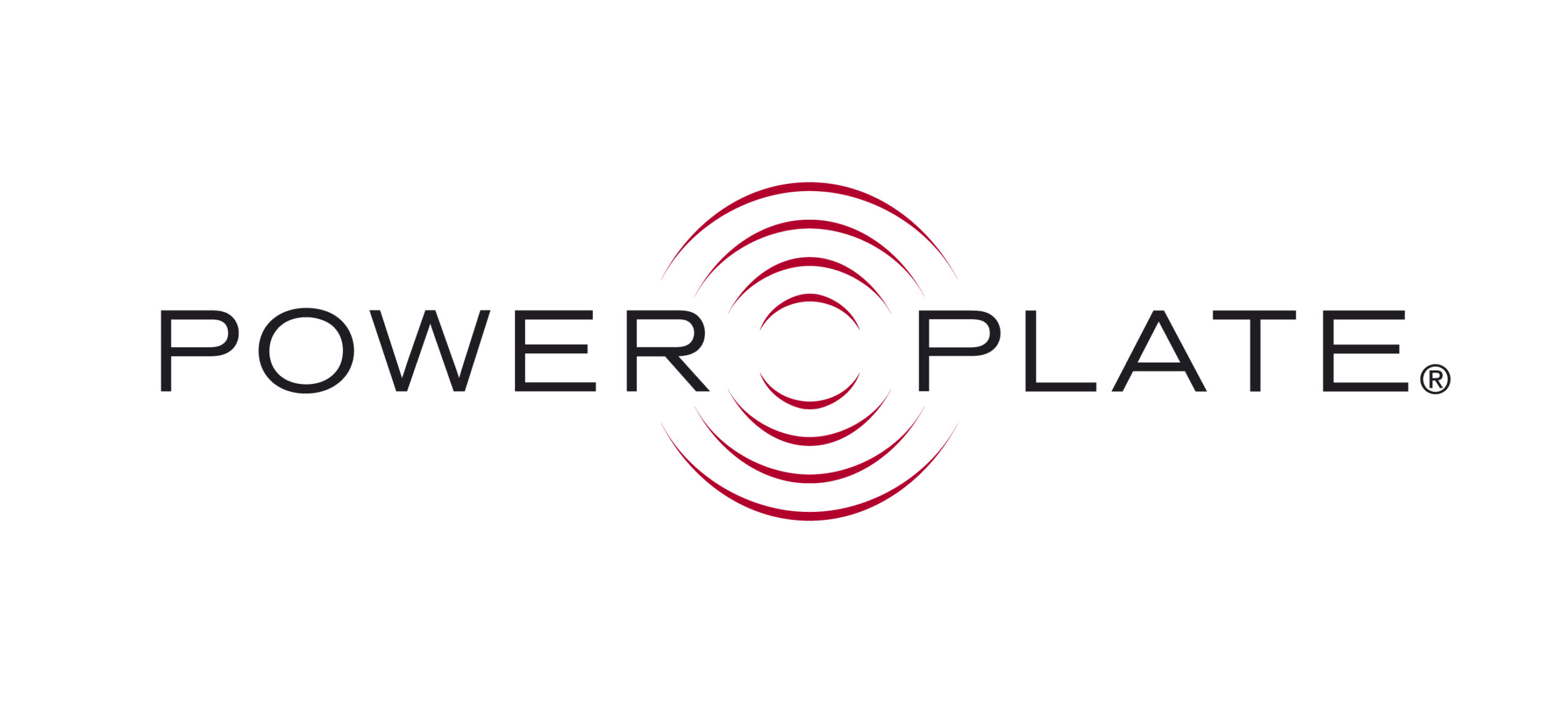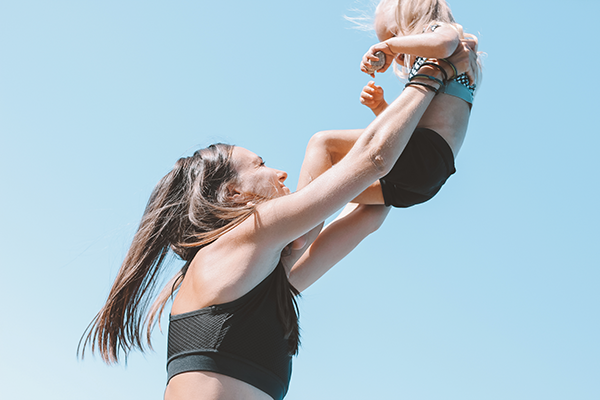As a strength and conditioning coach, I couldn’t help but look at mums and the way they move as a sport, and approach training for motherhood with the same mindset as training for sport.
When we are training athletes, we are aiming to get them faster, more powerful, and more skilled at a certain set of movements. A consequence of repetitive movements is a postural adaptation to those movements, which we can “unwind”, or “release”, to keep the body in front of us balanced.
We also need to make sure we balance the intensity with which athletes train to avoid over training, repetitive stress, and burnout. To do this we schedule down time, on weeks and off weeks, overload and unloading periods.
The same is true for mums. They have an active “job”. One that runs for 24hrs, 7 days a week. We need to ask the questions:
- What are they doing everyday that we can make them “better” at? Both stronger and fitter?
- What are they doing everyday that we can make them more diverse at?
- What patterns do we see that we can “unwind” or “release” to relieve pain or posture?
- How can we balance their intensity? Most SAHM’s need permission to STOP. How can we incorporate down time and relaxation in to their session?
Strength Training for Motherhood
So let’s think about what mums do everyday that we can make them more powerful, stronger, and better at.
For one – they’re lifting every day. Children, shopping, prams, bikes, car seats. From the floor to the change table, from the change table to the bouncy chair, from the bouncy chair to the car seat, it never stops.
This frequent heavy lifting is a risk factor for developing pelvic dysfunctions like prolapse and incontinence, so while we should be strength training and lifting with mums, we do strongly recommend to follow a process:
- Get their pelvic floor checked by a Women’s Health Physiotherapist. If you’re in Australia You can look up your nearest women’s health physio here.
- Teach them the movement
- Add load.
For example, we could train a deadlift – straight up and down, bent leg, straight leg, with arm extension, single arm, single leg.
More on this here:
If you wish to learn more about strength training for women you may be interested in this mini-course for NZREPS CPDs.
Cardio Fitness Training for Motherhood
Simply going for a run might be plenty, but most mums need sub-max endurance to keep them going all day, with little bursts of max efforts for when the 3YO leaps on the road or falls down the stairs. Roughly 30% of the women you as a trainer will see will not have the pelvic strength/endurance/coordination/health to run. It is worth considering what kind of cardio fitness they actually need and how you can help them develop it.
Once again we have to follow a process:
- Get their pelvic floor checked by a Women’s Health Physiotherapist. If in Australia you can look up your nearest women’s health physio here.
- Start short, light, and with a forefoot landing
- Add Load by playing games (some examples are below)
GO game (react with cardio)
Left to Right game (catch ball)
Balance Training for Motherhood
What kind of balance do they need? Will standing on one leg or opposite arm/leg raises really help them when they’re leaping out in front of a 3YO, across the dog’s leash, to stop the child from running on to the road? Do they help when she’s stepped on lego at the same time her 2YO has leapt off the coffee table?
Mums need RE-ACTIVE balance.
By all means, stand her on one leg, but throw a ball at her at the same time. Or destabilise on the Power Plate machine, do SOMETHING that she has to react to! Examples are:
- Single leg balance with VIPR reach
- Single leg balance catching ball
- Step over a fence, T and Y squat, as slowly as possible
Diversity of Movement training for Motherhood
So we have some straight line work and i’ve already given you some ideas that work outside that, but here’s some more… yes, a mum needs to deadlift, and learning a “good” deadlift is important. But if that’s the only way she can do it, that’s the only strategy she has, so once she has a handle on it, we can build diversity in to give her a body that can do multiple things in multiple ways.
- Straight line deadlift
- Choose a driver – head, foot, arms
- Move in 3 directions/planes – frontal, saggital, transverse (for each driver)
Releases for Mums
Because mums perform a series of repetitive movements, their bodies will reflect adaptations to these positions. Upper Cross Syndrome is essentially the “slumped shoulders” posture many mothers develop, and Lower Cross Syndrome is essentially a “sway” back. Both of these postures, as well as a lack of lumbar curve, may sometimes cause pain, or negatively impact the pelvic floor, or inhibit certain movements.
We can release these patterns, by literally taking the pressure off them. If you see the slumped shoulders, move the opposite way.
Here are some example of movements you can do for Upper Cross Syndrome:
- Chest stretch against PP stem
- Titanic stretch
- Hip Flexor stretch with hands and arms up
For Lower Cross Syndrome:
1. Roll downs
2. Standing hamstring stretch
3. Down dog
For a posterior tilt:
1. Cobra
2. Up dog
3. Step back and reach opposite direction.
None of these should hurt. You can also apply the rule of diversity in these movements by picking a limb, and moving it in 3 planes as you repeat the release.
Recovery for Mums
I think this goes unnoticed for a lot of us, but if motherhood is like a sport, then we need to recover as if we’re doing a sport too! Athletes will nap, take ice baths, have massages, and practice meditation to recover from their training and competing schedules, and so can mums!
We also have to think about the lifestyle of a mother. Once she was just Sarah who works 40hrs and played netball 2x week. When they have a baby, they add appointments and check ups and a completely different routine for that mum’s brain and body. By the time the 2nd baby comes along, she has her work, her commitments for the first child, and also the 2nd child’s needs compounded in to the same 24hr days. This means Sarah will start to cut things, and her work and sport is usually the first thing to go. Recovery is an important factor in this lifestyle to prevent burnout and balance overwhelm. Downtime and being still is really important for a woman’s hormonal balance, mental health, and physical health (because how you think affects you physically.
So here are some great ways for a mum to balance her training and physical job with recovery.
Here are some ways we can use the vibration for recovery:
- Thigh massage
- Lower back massage with step
- Vibration gun around neck and arms
Most of time time I like feet higher than heart, because this position can lower blood pressure, improve circulation, trigger the relaxation response in the muscles and ligaments, and improve symptoms of depression and anxiety (perhaps even overwhelm!). More on inversions here:
More on recovery for mums:

